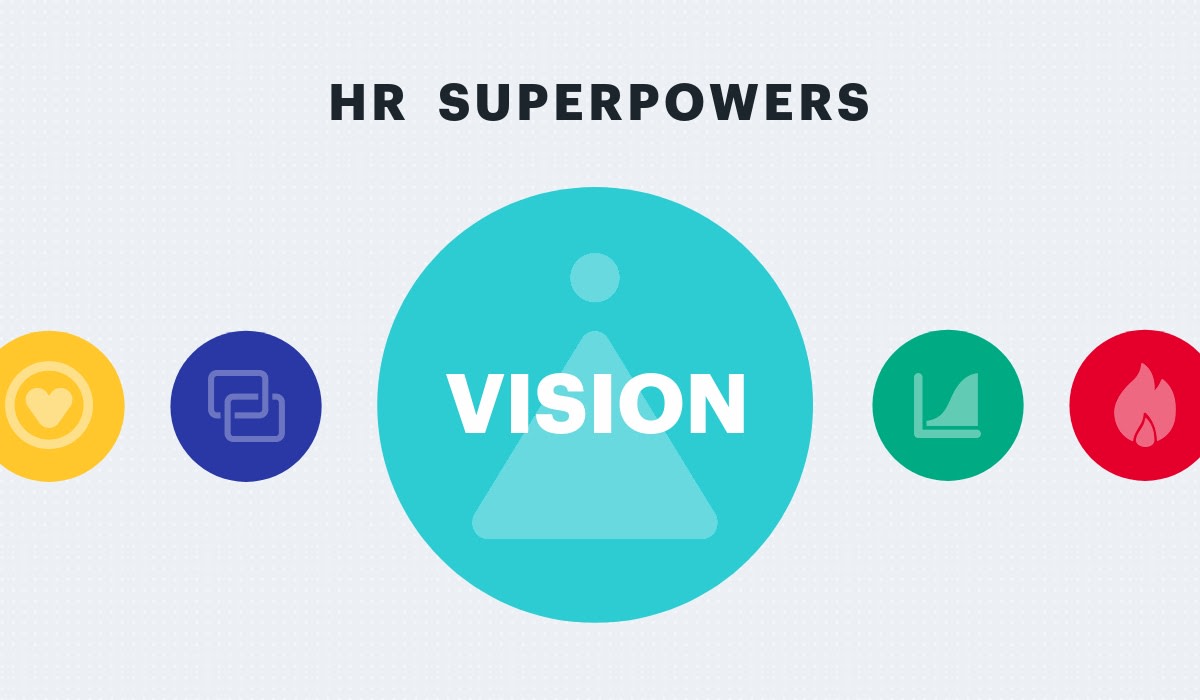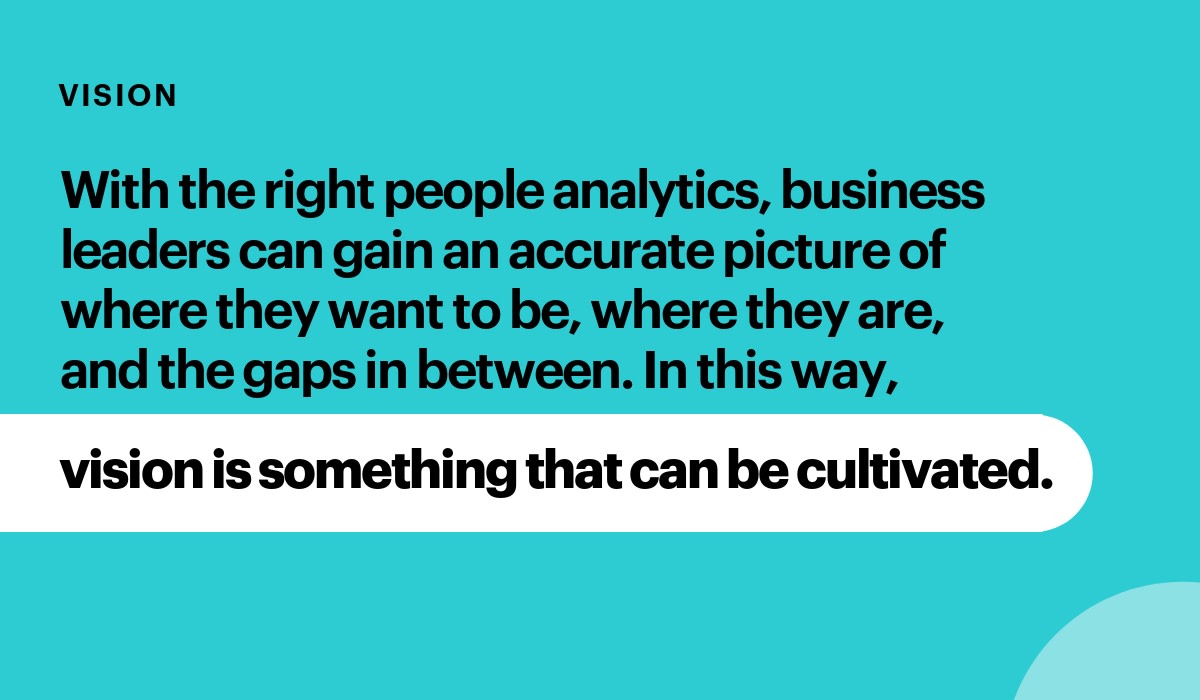Vision is an HR Superpower You Can Cultivate—Here’s How
The pandemic forced organizations into a here-and-now operating mode, but that didn’t stop visionary HR leaders from looking ahead. Here's how they did it.

Using layoffs only as a last resort, giving employees extra days off, and finding more ways to provide learning and development opportunities even as budgets were cut and the world raged with uncertainty.
These are just some of the examples of how forward-thinking HR leaders avoided a purely clinical approach to talent decisions during the COVID-19 pandemic. They knew that maintaining the good will of their employees was key to future-proofing the business.

Wayfair’s Emily Yu took the HR Superpowers Quiz and learned that hers is Vision. Watch this short video (2:05) to hear why it was especially important during the pandemic.
Putting people first during this tumultuous time has been an important area of focus for HR leaders who were concerned about future employee retention trends. Indeed, our data indicates that voluntary resignation rates hit a significant spike from July to September of 2020 and trend data for 2021 shows that resignation rates have already started to climb.
But visionary HR leaders did more than just anticipate future turnover patterns—even as the economy took a nosedive. They were also thinking about building a resilient workforce for the jobs of tomorrow.
As the pandemic forced organizations into a here-and-now mode of operating, HR leaders connected with other departments to look at potential shifts in consumer behavior, the demands of digital transformation, and broader macro trends. In short: they were prepping for the future.
It’s clear that visionaries are key to the success of people-first businesses—that’s why it’s one of the five superpowers of effective HR leaders. Those leaders who have the gift of vision can:
Anticipate long term trends, seeing where the opportunities and challenges lie
Understand how their current workforce is an asset for the future
Be innovative, yet focused and persistent
Want to know what trait you identify most with? Take our short quiz to find out what makes you a superpowered HR pro!
3 ways people analytics supports visionary HR leaders
Visionaries have a clear picture for the future and what it will take to get there in terms of their organization’s size and skillset. At first glance, leaders with this trait appear to have an almost mystical quality about them. (Are they consulting a crystal ball off screen?) But dig a little deeper, and you will find that these types of leaders have something in common: data.
With the right people analytics, leaders can gain an accurate picture of where they need to be, where they are, and the gaps in between. In this way, vision is something that can be cultivated with the right approach.

Here are three ways people analytics helps HR leverage the superpower of vision:
1. Map out the implications of a plan
Shaping the future of work means thinking about actions you can take in the present. “Form teams to inhabit each of your far-future worlds, and give them this challenge: What should we be doing now that would enable us to operate better in that particular future?” writes foresight consultant J. Peter Scoblic in this HBR post.
Traditionally, organizations could only use people analytics to answer questions about what happened in the past, what is happening today, and what is likely to happen. But with robust analytics, visionaries can answer “what if” questions about the future. In other words, they can see clearly what will happen if a certain action is taken or change is made.
This means HR can ask questions like: What will happen to top performer resignation rates if they are given a pay raise of 4 percent instead of 6 percent? What will an enterprise’s diversity distribution be at the end of the year if the female hire rate is increased by 2 percent?
This makes it possible for visionaries to evaluate their ideas and better assess which ones are worth pursuing.
2. See potential where others do not
By 2024, around 40% of workers will require reskilling that can take up to six months, according to the World Economic Forum. The rapid shift to digital and automation also means that lower skilled workers face job losses while higher skilled workers could see pay increases, thereby widening existing inequalities.
Visionaries don’t just think about competing on the open market for the diverse talent needed to ward off potential skills gaps, they look at their existing talent pool and see hidden gems that can be nurtured. With people analytics, they can determine how much of a learning investment is required to bring an employee up to speed using metrics like time to productivity. In the end, they can understand how much investment is required to reach business goals, and whether a particular vision is viable.
3. Peer into future movement trends
Getting a clear picture of where you will stand tomorrow from a talent supply perspective is all about understanding the movement of people in and out of the organization, as well as between departments and job levels.
This is where predictive analytics can be an asset to visionary HR leaders, particularly from the perspective of employee turnover. At Visier, we leverage AI in our risk of exit models so that organizations can determine whether individuals are likely to leave. They can either intervene to retain them or gain a better understanding of where natural attrition will take place.
But this doesn’t mean that being a visionary is about trying to predict the future with 100% certainty—it’s about determining what kind of future the organization wants to create. For example, the goal of achieving gender parity for executive roles in the long term requires organizations to plan ahead and make conscious decisions.
This is something that is also supported by people analytics. Our research report shows that Visier customers achieved an improvement in female leadership ratio to males by 11.5% in what is called the “prime succession pools” (also known as “feeder pools”) for those below the senior leadership level that could be promoted into executive ranks.
This is one of the many ways that people analytics supports the execution of long term talent strategies and the vision for a more equitable future.
Vision for a strong and resilient future
With the use of people analytics, vision is something that leaders can acquire and cultivate. Many HR leaders are gaining the clarity of insight needed to ward off skills gaps and determine whether organizations are building the kind of workforce they need.
Technology has evolved to the point where HR leaders can have a clear vision—not just of what might happen tomorrow, but how they can actively shape the future if certain actions are taken. And as the experiences of the pandemic have revealed, when people-focused leaders look ahead, everybody wins.
Get the Outsmart newsletter
You can unsubscribe at any time. For more information, check out Visier's Privacy Statement.


